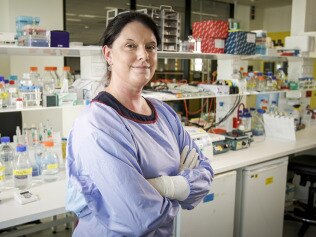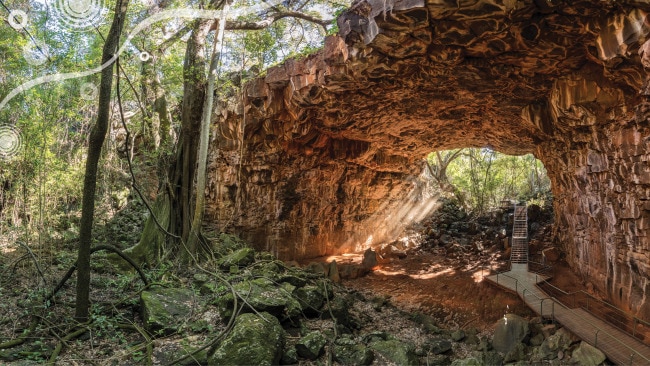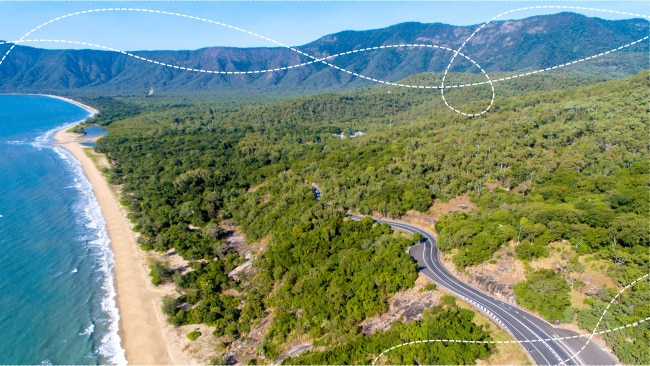Battle for health just got personal
Every one of us can make a difference in the battle against life-threatening illness. Together. Fight.

Every one of us can make a difference in the battle against life-threatening illness. Together. Fight.
Prevailing against life-threatening illness will be the biggest battle many of us fight in our lives and it’s not one any of us is going to win by ourselves.But if we all make a contribution to the fight, be it supporting a family member, volunteering our time, contributing to fund raising or even pursuing medical research, victory is so much more likely.This is the passionate message behind The Hospital Research Foundation’s latest campaign, Together. Fight, which it hopes will underpin the powerful work it does supporting medical research and patient care in areas including cancer, heart disease, stroke and diabetes.It’s a message Paul Flynn, THRF chief executive officer, hopes will draw the community together in the fight and let us know we are all part of a tribe that can make a difference.“There’s a lot of research out there (which says) the best outcomes for people in therapeutic situations is where they know they’ve got a lot of people in their corner and a lot of things going their way,” Flynn says.In bringing people together, the message is also aimed at having them know that any kind of contribution can make a difference, not only for patients who are sick but also the people who are working hard to try and get them better.“People were telling us ‘It appears, to make an impact, it needs a lot more than I can offer’,” he says. “We wanted a campaign in which people felt endeared to say, it doesn’t matter how small my contribution can be – whether it’s volunteering at my local hospital or getting behind my cousin who’s got cancer – I can make that contribution and it all adds to the fight.”Flynn says the response to the unique ad campaign has been profound and is still growing.“It’s been fantastic. We’ve had some great responses from the researchers and medicos and we’ve had some beautiful responses from the people who have recovered from cancer or their family members have been through cancer and they’ve truly understood the value of getting a tribe around people who are sick – we’ve been inundated by that sort of response,” he says.“We’ve had people wanting to donate but that’s not our principal goal. It’s lovely that people want to donate but our objective at this point of a four-year campaign is to get people talking about the fact everyone can make a difference if we do it together.”The chief executive says the message is also aimed at having a community-wide impact for anyone involved in fighting life-threatening disease.“I’m getting feedback from other organisations that people are coming to them saying I would like to make a contribution,” Flynn says. “Interestingly, an organisation in Canada that did a similar thing was not only able to achieve some of their goals, but every other organisation in their geographical area also benefited.”LENDING A HAND – TOGETHER. FIGHT.The cinema advertisement features a simple visual image: a lone woman stands in a hospital gown holding a heavy rope, which is suddenly picked up by a giant, muscled-bound man tattooed with the words “heart disease”, “diabetes” and other illnesses. Inexorably, the defenceless woman, is dragged towards her fate, quickly followed by other similarly vulnerable individuals. Suddenly, more hands grab the rope and join the battle against the strong man, and the tug or war becomes destined for a very different outcome.What most people watching the ad won’t know is that the people involved have each had their own fight with illness, either as a patient, researcher, fundraiser or employee in the THRF family. Each person volunteered their time as their own contribution to the cause.“These are real people, not actors, and people are seeing their own narrative, their own tribe,” Flynn says.MARGARET HARRIGANAt 68 years old and back in the prime of health, Margaret Harrigan loved every minute of filming the advertisement: “It took about six hours and it was pretty tiring but the director was so incredible,” she says. “The poor guy was working with a bunch of amateurs … my only experience with drama is I teach media and drama with primary kids.”But nine years ago, Harrigan would not have been up to the challenge, as type 1 diabetes turned her life into a battle zone. “I was 30 weeks pregnant with our second child when I got gestational diabetes and it didn’t go away,” she says. “Normally it does, but mine decided to hang around. It becomes type 1 diabetes. I had to inject twice a day.” That was in 1975 and 30 years later, life had become tenuous for Harrigan as the condition worsened. The changes meant early retirement from her beloved teaching job and a loss of hypo, or low-sugar, awareness meant 15 to 20 finger-prick blood tests a day and having her husband, Kerry, on constant alert in case her blood sugar levels dropped to dangerous levels.“He’d go shopping because I was too scared to drive – it wasn’t safe for other people as well as myself,” she says. “He’d ... ring me and if there wasn’t an answer he would fly in the door. He’s left the shopping trolleys in the middle of the aisle and just raced out to inject me with the glucagon (a life-saving injection of insulin). The same thing would happen at night. I’d be asleep and I wouldn’t know I was having a hypo but, every single time – hundreds – he’d wake up and inject me.”She also could no longer care for her young grand children, was losing feeling in her feet and displaying the signs of diabetic retinopathy, a leading cause of blindness.All that changed when she became South Australia’s first successful islet transplant recipient in 2010. Life-saving research, funded by THRF, created the process in which islets from a donor pancreas are transplanted into the recipient’s liver allowing them to create their own insulin. After two operations and many more tests, Harrigan was finally declared cured of the disease and says she suddenly has her life back again. “Not everybody gets the all clear but I did, I was extremely lucky,” she says. “Oh my god. I went back teaching six months after the first transplant. I drive now and we can both get safe sleep.“We’ve been overseas. When I came off insulin, (doctor and researcher) Toby Coates just gave me his travel agent’s card and said go book a trip.“In August (2010) they said ‘come off insulin, you are no longer a diabetic’, and I just cried.”Her gratitude to THRF and the researchers and doctors they helped fund meant Harrigan had no qualms about taking part in the advertisement and helping boost research for cures.“That’s why research is so important – the disease doesn’t affect only the patient, it affects so many other people,” Harrigan says.DR LEILA BELLECancer researcher Dr Leila Belle didn’t know exactly what she was signing up for when she agreed to be part of the THRF advertisement.“I thought it would be standing around in a lab coat,” Dr Belle admits. “It took me way out of my comfort zone but I was really happy to be doing that. It was an amazing experience. “It was something really new but I also liked the collection of people we brought together – patients that had benefited from medical research and researchers who’d contributed to that and the crew who was doing the filming. They were great actually. “We were so excited to see how the whole advertisement came together. It’s very powerful and it really gets behind the meaning of what we are trying to do – that it impacts all of us and we are fighting it together. There is support and any contributions people can make will make a difference.”Dr Belle’s work as a research associate in the Centre of Cancer Biology, an alliance between UniSA and SA Pathology, seeks to identify the mechanisms within cancer cells that cause them to spread through the body and/or become resistant to current therapies. The work is leading to more effective treatments for patients with cancer.“It wasn’t until I was in a research environment that I had an insight into how much of an impact we can have on coming up with cures for cancer and saving lives,” she says. “It wasn’t like I set out with that intention but, once I was in that space, I really got a feel for that and that’s where my passion came from.”She says labs like the Centre for Cancer Biology are critically dependent on funding from different sources, including THRF. “There’s a certain level of government funding you can apply for but that’s nowhere near enough to cover all the research activities,” the doctor says. “The work THRF and other places are doing is critical.”“We are so busy doing research and trying to cure cancer, I think there’s a bit of a disconnect between the researchers and the general public’s understanding of what we do. THRF have done a really great job of connecting that and letting people know what research has been done and how that’s impacting people’s lives.” HOME LOTTERYThe 30th edition of of the Hospital Research Home Lottery is underway, offering a $2.8 million grand prize of a fully furnished Scott Salisbury Homes architecturally designed house at Henley Beach plus $1 million in cash. Luxury cars, world holidays and cash are among a total of 19,510 prizes on offer in the lottery, with a 1 in 10 chance of winning a prize.The lottery closes on October 4, to be drawn on October 11.Visit: homelottery.com.au
Originally published as Battle for health just got personal



